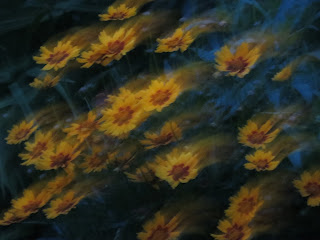One genus of plants which I'm loving more and more is the Viburnum. It's a big group of plants, the genus consists of 150 or more species of evergreens, semi-evergreens and deciduous shrubs and trees. I love these plants because they tick all the boxes: they're tough, low-maintenance, many have fragrant flowers often from autumn to spring, they produce berries, are wildlife-friendly and need little pruning, they tolerate sun or partial shade and do well in all but the most waterlogged soil.
Viburnums are widely found in Northern Temperate regions but also originate from China, South East Asia and South America. They have a history of being popular: they feature in the designs of Capability Brown and Humphrey Repton and in the past viburnum tinus was grown as clipped specimens in pots and appear in Gertrude Jekyll's tome, Colour Schemes for the Flower Garden, where she talks of viburnum opulus (she calls it water elder). Viburnums are an excellent choice for garden design, being well suited to a formal design. The 'wedding cake' tree, V.plicatum f. tomentosum 'Mariesii', makes a striking specimen here, with its spreading branches forming horizontal 'layers'.
I have 3 viburnums: v.tinus 'Eve Price', v.tinus 'Gwenllian', and v. davidii, with its clusters of blue berries. I brought all these with me when I moved to Somerset from Wiltshire. The soil here needed a lot of work and I doubted they'd do well. Not only have they done well, they're positively thriving, the flowers of Eve Price lighting up a shady part of the garden in these dark winter days.
Viburnum tinus looks very good on its own or as a background to other shrubs. Eve Price is probably the best known of this group, but there are others, such as Lucidum, and the variegated variety, 'Variegatum'.
I'm very lucky that in a garden I work in there is a mature viburnum bodnantese 'Dawn'. The scent of vanilla that wafts across the garden as I work is truly delicious. I don't know much about the psychology of fragrance, but it must play a part in elevating mood and creating a positive outlook.
Viburnums are widely found in Northern Temperate regions but also originate from China, South East Asia and South America. They have a history of being popular: they feature in the designs of Capability Brown and Humphrey Repton and in the past viburnum tinus was grown as clipped specimens in pots and appear in Gertrude Jekyll's tome, Colour Schemes for the Flower Garden, where she talks of viburnum opulus (she calls it water elder). Viburnums are an excellent choice for garden design, being well suited to a formal design. The 'wedding cake' tree, V.plicatum f. tomentosum 'Mariesii', makes a striking specimen here, with its spreading branches forming horizontal 'layers'.
I have 3 viburnums: v.tinus 'Eve Price', v.tinus 'Gwenllian', and v. davidii, with its clusters of blue berries. I brought all these with me when I moved to Somerset from Wiltshire. The soil here needed a lot of work and I doubted they'd do well. Not only have they done well, they're positively thriving, the flowers of Eve Price lighting up a shady part of the garden in these dark winter days.
Viburnum tinus looks very good on its own or as a background to other shrubs. Eve Price is probably the best known of this group, but there are others, such as Lucidum, and the variegated variety, 'Variegatum'.
I'm very lucky that in a garden I work in there is a mature viburnum bodnantese 'Dawn'. The scent of vanilla that wafts across the garden as I work is truly delicious. I don't know much about the psychology of fragrance, but it must play a part in elevating mood and creating a positive outlook.





